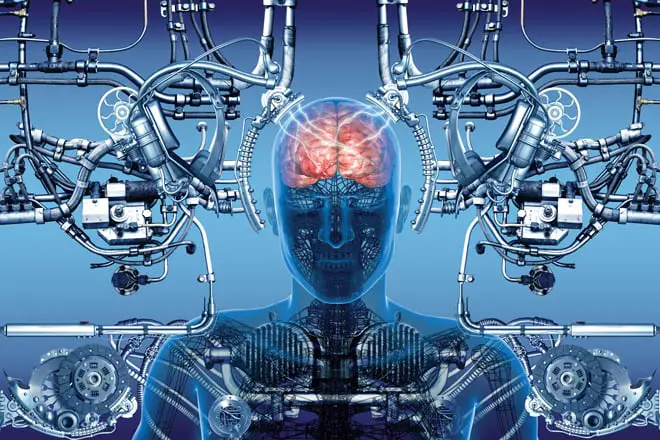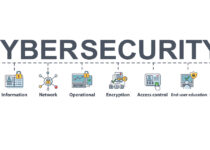Revolutionizing Human-Machine Interaction: The Power of Neurotechnology and Brain-Computer Interfaces
Introduction:
Neurotechnology and Brain-Computer Interfaces (BCIs) stand at the forefront of scientific innovation, promising to reshape the way humans interact with machines and, ultimately, with the world around them. In recent years, rapid advancements in neuroscience and technology have propelled these fields into the spotlight, unlocking the intricate workings of the human brain and bridging the gap between mind and machine.

Understanding Neurotechnology:
Neurotechnology and Brain-Computer Interfaces is a broad field encompassing various technologies that interface with the nervous system. It integrates principles from neuroscience, engineering, and computer science to decode and manipulate neural signals. These technologies range from non-invasive methods like EEG (electroencephalography) to more invasive techniques such as neurostimulation and Brain-Computer Interfaces.
The roots of neurotechnology trace back to the early exploration of the brain’s functions. As our understanding of neuroscience has deepened, so too has the potential for developing innovative applications to enhance human life. Neurotechnology is not confined to a single discipline; instead, it leverages knowledge from neurobiology, computer science, and electrical engineering to create a symbiotic relationship between the brain and technology.
The Science Behind Brain-Computer Interfaces:
At the heart of Neurotechnology and Brain-Computer Interfaces lies the fascinating realm of Brain-Computer Interfaces. BCIs are systems that enable direct communication between the brain and external devices, translating neural activity into commands that can control computers, prosthetics, or other technologies. The science behind BCIs involves deciphering the complex language of the brain—interpreting neural signals and converting them into meaningful actions.
There are two primary types of BCIs: invasive and non-invasive. Invasive BCIs require surgical implantation, placing electrodes directly on or inside the brain. While offering a high level of precision, they come with potential risks and ethical considerations. Non-invasive BCIs, on the other hand, capture neural signals from outside the body, typically through technologies like EEG or fNIRS (functional near-infrared spectroscopy).
Understanding how BCIs function involves recognizing the brain’s electrical activity patterns, which vary depending on different thoughts, movements, or intentions. Researchers and engineers harness this neural code to design interfaces capable of interpreting user commands with remarkable accuracy.
Applications of Brain-Computer Interfaces:
BCIs hold immense promise across a spectrum of applications, with the potential to revolutionize fields such as healthcare, communication, and entertainment.
Healthcare Advancements: In the realm of healthcare, BCIs have emerged as transformative tools. Individuals with motor disabilities, such as paralysis, can regain a sense of autonomy through neuroprosthetics controlled by BCIs. By decoding neural signals associated with movement intentions, BCIs allow users to manipulate robotic limbs or communicate with external devices using the power of their thoughts.
Neurological Disorders and Research: BCIs play a crucial role in neuroscience research and the study of neurological disorders. Researchers use BCIs to explore brain function, map neural pathways, and develop interventions for conditions like Parkinson’s disease, epilepsy, and depression. By interfacing directly with the brain, BCIs provide insights into neural processes that were once inaccessible.
Neurotechnology in Research and Medicine:
The impact of Neurotechnology and Brain-Computer Interfaces extends beyond BCIs, influencing various facets of research and medicine. Neuroimaging techniques, such as fMRI (functional magnetic resonance imaging) and PET (positron emission tomography), enable scientists to visualize and understand brain activity. These tools aid in diagnosing neurological disorders, planning surgeries, and monitoring treatment outcomes.
In the realm of neurostimulation, technologies like deep brain stimulation (DBS) have shown remarkable success in alleviating symptoms of movement disorders, chronic pain, and psychiatric conditions. These interventions involve delivering controlled electrical impulses to specific brain regions, modulating neural activity and restoring balance to disrupted circuits.
Ethical Considerations and Challenges:
While the potential benefits of Neurotechnology and Brain-Computer Interfacesand BCIs are vast, they come with ethical considerations and challenges that demand careful scrutiny. Privacy concerns arise as the ability to decode and interpret brain signals raises questions about the confidentiality of one’s inner thoughts. The invasive nature of some neurotechnological interventions introduces ethical dilemmas related to consent, safety, and long-term consequences.
Additionally, the potential for cognitive enhancement through Neurotechnology and Brain-Computer Interfaces prompts discussions about fairness and equality. As these technologies advance, society must grapple with the ethical implications of enhancing cognitive abilities, potentially creating disparities between those who have access to such enhancements and those who do not.
Future Prospects and Innovations:
Looking ahead, the future of Neurotechnology and Brain-Computer Interfaces and BCIs holds exciting possibilities. Ongoing research aims to refine existing technologies and explore new frontiers in human-machine interaction.
Cognitive Augmentation: One promising avenue involves the concept of cognitive augmentation—using BCIs to enhance cognitive functions such as memory, attention, and learning. While still in the early stages of development, the potential to boost human cognitive abilities opens the door to unprecedented advancements in education, professional tasks, and overall mental well-being.
Brain-to-Brain Communication: Another frontier is brain-to-brain communication, where BCIs facilitate direct communication between individuals’ brains. While currently experimental, this technology could revolutionize interpersonal communication, allowing for the direct exchange of thoughts and emotions.
Advantages:
- Medical Advancements:
- Improved Rehabilitation: BCIs enable individuals with motor disabilities to regain control over prosthetic limbs, providing a higher degree of autonomy and improving their quality of life.
- Neurological Disorder Treatment: Neurotechnology and Brain-Computer Interfaces contributes to the development of treatments for neurological disorders such as Parkinson’s disease, epilepsy, and depression, offering new avenues for therapeutic interventions.
- Research Insights:
- Unprecedented Understanding: Neurotechnology facilitates a deeper understanding of brain function and neural processes, offering insights that were previously inaccessible. This aids researchers in studying cognition, emotion, and behavior.
- Cognitive Enhancement:
- Potential for Cognitive Augmentation: BCIs hold the potential to enhance cognitive functions such as memory, attention, and learning. This could revolutionize education, professional tasks, and overall mental well-being.
- Human-Machine Interaction:
- Enhanced Communication: BCIs enable direct communication between the brain and external devices, fostering more efficient and intuitive communication methods for individuals with limited mobility.
- Mind-Controlled Devices: The ability to control devices with mere thoughts opens up possibilities for creating more intuitive and responsive technologies.
- Innovations in Healthcare:
- Neurostimulation Therapies: Neurotechnological interventions like deep brain stimulation (DBS) offer effective treatments for conditions like chronic pain and psychiatric disorders, improving patients’ quality of life.
Disadvantages:
- Ethical Considerations:
- Privacy Concerns: The ability to decode and interpret neural signals raises significant privacy concerns. The invasive nature of some neurotechnological interventions prompts questions about the confidentiality of one’s thoughts.
- Cognitive Enhancement Divide: The potential for cognitive enhancement through neurotechnology raises ethical questions about fairness and equality, creating a potential divide between those with access to enhancements and those without.
- Invasive Procedures:
- Surgical Risks: Invasive BCIs require surgical implantation, which comes with inherent risks such as infection and tissue damage. This raises concerns about the safety and long-term effects of such procedures.
- Ethical Dilemmas: The invasive nature of some neurotechnological interventions raises ethical dilemmas related to consent, the potential for coercion, and the irreversible nature of certain procedures.
- Technological Challenges:
- Accuracy and Reliability: Current BCIs may face challenges in terms of accuracy and reliability, particularly with non-invasive methods. Improvements are needed to ensure precise decoding of neural signals for optimal functionality.
- Interference and Noise: External factors, such as environmental noise and other biological signals, may interfere with the accurate interpretation of neural signals, affecting the performance of BCIs.
- Social Implications:
- Adoption and Stigma: Widespread adoption of neurotechnological devices may face societal resistance due to concerns about the unknown, potential misuse, or perceived ethical issues. Stigma may surround those who choose to enhance their cognitive abilities through technology.
- Regulatory Challenges:
- Lack of Regulation: The rapid pace of development in neurotechnology may outstrip regulatory frameworks, posing challenges in ensuring the ethical and safe deployment of these technologies.
- Access and Equity: Ensuring equitable access to neurotechnological advancements across diverse populations remains a challenge, raising concerns about exacerbating existing societal disparities.
In navigating the landscape of neurotechnology and BCIs, it is crucial to strike a balance between harnessing the potential benefits and addressing the associated challenges to ensure responsible and ethical advancements in this field.
Conclusion on Neurotechnology and Brain-Computer Interfaces:
In conclusion, the intersection of neurotechnology and Brain-Computer Interfaces marks a watershed moment in the ongoing saga of human progress. These fields not only unravel the mysteries of our cerebral landscape but also open portals to transformative applications that have the potential to reshape the very fabric of our existence.
As we stand on the precipice of a new era in human-machine symbiosis, it becomes imperative to tread with a delicate balance of enthusiasm and caution. The promises of cognitive augmentation, brain-to-brain communication, and unparalleled advancements in healthcare are tantalizing. Yet, they bring with them a suite of ethical considerations and societal challenges that must be addressed with utmost diligence.
Ethical frameworks and privacy safeguards must be woven into the fabric of technological development, ensuring that the benefits of neurotechnology are accessible to all without exacerbating existing disparities. The power to decode and manipulate the human mind demands responsible stewardship, guided by a commitment to equity, transparency, and the sanctity of individual autonomy.
In embracing the potential of neurotechnology, we embark on a profound journey—one that challenges the boundaries of what it means to be human. It is a journey that invites collaboration across disciplines, sparking conversations that blend scientific curiosity with ethical responsibility. As we navigate this uncharted territory, let us forge a path that not only unlocks the immense capabilities of the human mind but also preserves the dignity and rights of every individual.
Ultimately, the fusion of neurotechnology and Brain-Computer Interfaces is more than a scientific breakthrough; it is a testament to our relentless pursuit of understanding and empowerment. It is a testament to our ability to leverage knowledge and innovation for the betterment of humanity. As we venture into this brave new world, may our exploration be guided by an unwavering commitment to the betterment of society, ensuring that the fruits of our technological prowess are shared equitably and ethically across the diverse tapestry of human experience.



